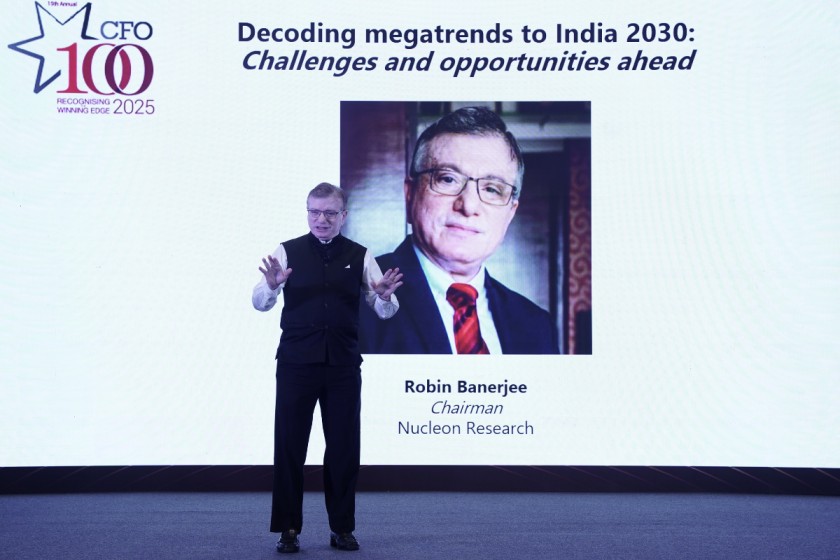- March 25, 2025
Decoding megatrends to India 2030: Challenges and opportunities ahead

At the recent 15th Annual CFO100 Conference in Mumbai, Robin Banerjee, Chairman of Nucleon Research, delivered a compelling address to India’s top financial leaders, mapping out the critical challenges and opportunities that will define the nation’s economic trajectory toward 2030.
Below are the key insights:
A binocular view of India’s future
If one were to gaze through the lens of economic foresight, India’s trajectory appears both dazzling and daunting. The country is on an inexorable march toward becoming the world’s third-largest economy by 2028, surpassing Japan and Germany. By 2050, it is projected to eclipse the entire European Union in GDP terms, and by 2075, it may even overtake the United States. These are not the musings of an overzealous nationalist but the cold calculus of demographic momentum and compounding growth rates—assuming India sustains a 5.8% expansion over the next decade and 4.8% thereafter.
Yet, beneath this macroeconomic triumph lies a sobering reality: India’s per capita income remains a paltry 2,700, a far cry from the 12,000 threshold that defines a “developed” economy. The challenge, then, is not merely scaling GDP but ensuring that prosperity is distributed—a task that hinges on reducing the Gini coefficient, the measure of income inequality.
The inequality conundrum
India’s Gini coefficient (0.41-0.42) is marginally better than China’s (0.46), but the nation’s wealth remains grotesquely concentrated. The path to egalitarianism is murky. Nordic nations (Gini: 0.17-0.19) exemplify this with robust welfare systems such as post retirement security, but India’s fiscal constraints demand innovation, not imitation. The New Pension Scheme and skilling missions are steps in the right direction, yet the gap between policy intent and ground-level impact remains vast.
The existential threat: Climate change
While India ascends economically, the planet is burning. Global temperatures have already breached the 1.5°C threshold (2024 average: 1.52°C), imperiling food security. Coal-fired growth—70% of India’s electricity—is untenable. The Business Responsibility and Sustainability Report (BRSR), now mandatory for top listed firms, is a bureaucratic husk, rarely read but critically important. It tracks emissions, yet lacks teeth. The future demands radical transparency: public rankings of corporate polluters, carbon taxation, and a hard pivot to renewables. The alternative is a dystopia where GDP gains are offset by harvest failures.
The crypto mirage
Amid the hype around blockchain, cryptocurrency stands out as a speculative farce. Bitcoin’s wild volatility and opacity (no demand-supply data) render it unfit as currency. Its primary utility? Facilitating illicit trades—arms, drugs, sanctions evasion. For CFOs dabbling in crypto, a rule of thumb: treat it as a gamble, not an asset.
The road ahead
India’s rise is inevitable, but its quality is not. The next decade must reconcile three imperatives:
- Growth with equity—bridging the chasm between GDP and per capita income.
- Green transition—decoupling development from emissions.
- Technological pragmatism—embracing AI while debunking crypto-fantasies.
The stakes could not be higher. By 2030, India will either be a beacon of inclusive progress or a cautionary tale of untapped potential. The choice lies not in crystal balls, but in policy today.
